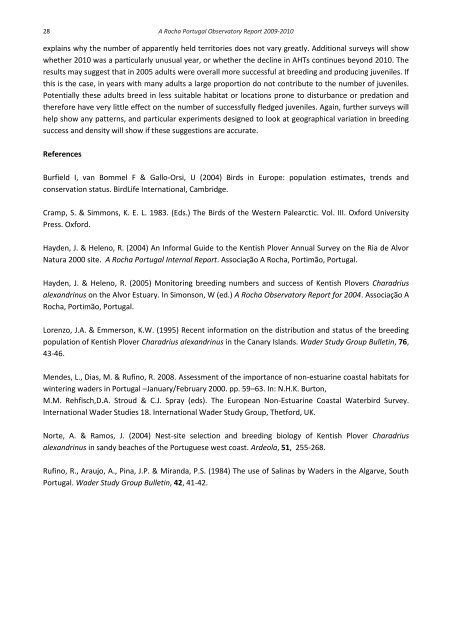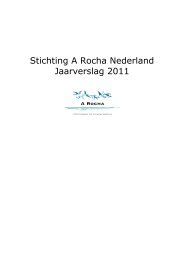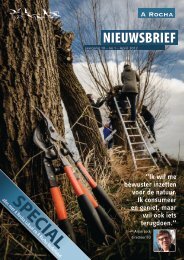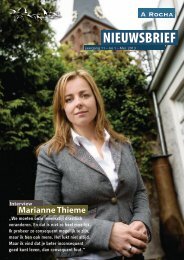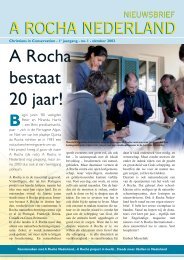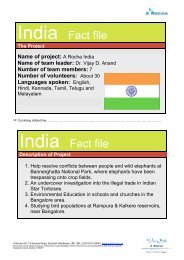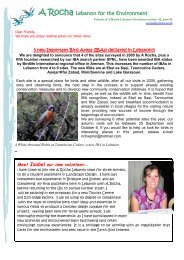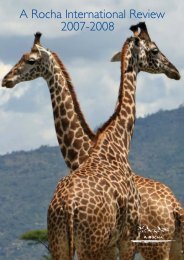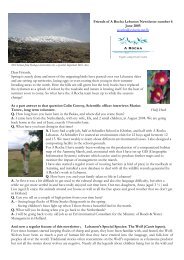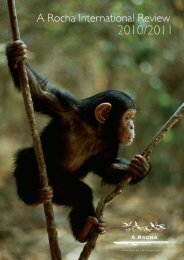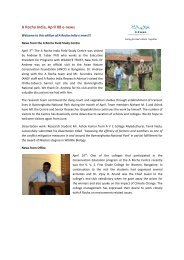A Rocha Portugal Observatory Report 2009-2010
A Rocha Portugal Observatory Report 2009-2010
A Rocha Portugal Observatory Report 2009-2010
You also want an ePaper? Increase the reach of your titles
YUMPU automatically turns print PDFs into web optimized ePapers that Google loves.
28 A <strong>Rocha</strong> <strong>Portugal</strong> <strong>Observatory</strong> <strong>Report</strong> <strong>2009</strong>-<strong>2010</strong><br />
explains why the number of apparently held territories does not vary greatly. Additional surveys will show<br />
whether <strong>2010</strong> was a particularly unusual year, or whether the decline in AHTs continues beyond <strong>2010</strong>. The<br />
results may suggest that in 2005 adults were overall more successful at breeding and producing juveniles. If<br />
this is the case, in years with many adults a large proportion do not contribute to the number of juveniles.<br />
Potentially these adults breed in less suitable habitat or locations prone to disturbance or predation and<br />
therefore have very little effect on the number of successfully fledged juveniles. Again, further surveys will<br />
help show any patterns, and particular experiments designed to look at geographical variation in breeding<br />
success and density will show if these suggestions are accurate.<br />
References<br />
Burfield I, van Bommel F & Gallo-Orsi, U (2004) Birds in Europe: population estimates, trends and<br />
conservation status. BirdLife International, Cambridge.<br />
Cramp, S. & Simmons, K. E. L. 1983. (Eds.) The Birds of the Western Palearctic. Vol. III. Oxford University<br />
Press. Oxford.<br />
Hayden, J. & Heleno, R. (2004) An Informal Guide to the Kentish Plover Annual Survey on the Ria de Alvor<br />
Natura 2000 site. A <strong>Rocha</strong> <strong>Portugal</strong> Internal <strong>Report</strong>. Associação A <strong>Rocha</strong>, Portimão, <strong>Portugal</strong>.<br />
Hayden, J. & Heleno, R. (2005) Monitoring breeding numbers and success of Kentish Plovers Charadrius<br />
alexandrinus on the Alvor Estuary. In Simonson, W (ed.) A <strong>Rocha</strong> <strong>Observatory</strong> <strong>Report</strong> for 2004. Associação A<br />
<strong>Rocha</strong>, Portimão, <strong>Portugal</strong>.<br />
Lorenzo, J.A. & Emmerson, K.W. (1995) Recent information on the distribution and status of the breeding<br />
population of Kentish Plover Charadrius alexandrinus in the Canary Islands. Wader Study Group Bulletin, 76,<br />
43-46.<br />
Mendes, L., Dias, M. & Rufino, R. 2008. Assessment of the importance of non-estuarine coastal habitats for<br />
wintering waders in <strong>Portugal</strong> –January/February 2000. pp. 59–63. In: N.H.K. Burton,<br />
M.M. Rehfisch,D.A. Stroud & C.J. Spray (eds). The European Non-Estuarine Coastal Waterbird Survey.<br />
International Wader Studies 18. International Wader Study Group, Thetford, UK.<br />
Norte, A. & Ramos, J. (2004) Nest-site selection and breeding biology of Kentish Plover Charadrius<br />
alexandrinus in sandy beaches of the Portuguese west coast. Ardeola, 51, 255-268.<br />
Rufino, R., Araujo, A., Pina, J.P. & Miranda, P.S. (1984) The use of Salinas by Waders in the Algarve, South<br />
<strong>Portugal</strong>. Wader Study Group Bulletin, 42, 41-42.


